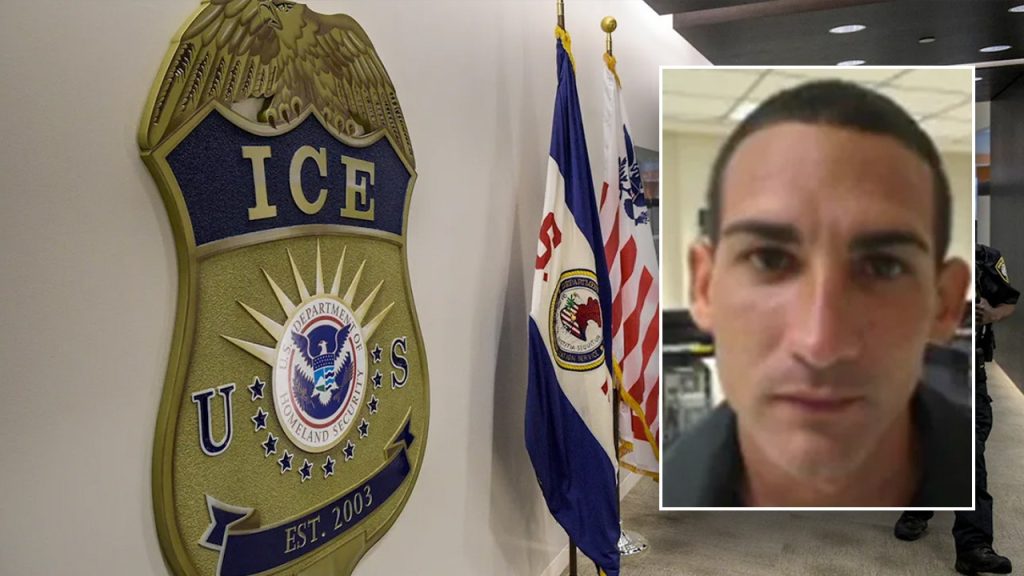Cuban Immigrant’s Brutal Murder Case Highlights Immigration Enforcement Challenges
In a disturbing incident that has reignited debate about immigration enforcement, ICE announced on Friday that it has placed a detainer on Yordanis Cobos-Martinez, a Cuban national accused of a horrific murder in Texas. According to authorities, Cobos-Martinez allegedly decapitated a merchant with a machete during an argument and then kicked the victim’s head “like a soccer ball” in front of the man’s family. This gruesome crime has drawn attention not only for its brutality but also because the suspect was previously in ICE custody before being released on supervision in January 2025 during the Biden administration. The case exemplifies the complex challenges at the intersection of immigration policy, international relations, and public safety.
The circumstances surrounding Cobos-Martinez’s presence in the United States reveal troubling gaps in the immigration system. Despite having a final order of removal to Cuba, he was released from ICE custody because Cuba refused to accept his return due to his criminal record. This reflects a persistent diplomatic dilemma where countries of origin sometimes refuse to repatriate their citizens, particularly those with criminal histories. Cobos-Martinez’s criminal background reportedly includes serious offenses such as child sexual abuse, grand theft auto, false imprisonment, and carjacking. This pattern of criminal behavior raises questions about the risk assessment processes used when making decisions about supervised release for individuals with removal orders who cannot be immediately deported.
The tragedy has prompted strong reactions from Department of Homeland Security officials, including Assistant Secretary Tricia McLaughlin, who described the murder as “completely preventable” and called Cobos-Martinez a “vile monster.” Her statement emphasized that the current administration is pursuing new approaches to handling cases where countries refuse to accept deportees, including removal to third countries. This policy shift represents an attempt to address the longstanding challenge of what to do with individuals who have final removal orders but cannot be returned to their countries of origin. The statement specifically mentioned potential third-country destinations such as Eswatini, Uganda, South Sudan, or the controversial detention facility known as CECOT.
The human impact of this case extends beyond policy debates. A family has been devastated by witnessing the brutal murder of their loved one, a trauma that will likely haunt them forever. The victim, described only as a merchant, represents one of the countless individuals whose lives are affected by the intersection of immigration enforcement decisions and criminal justice outcomes. While public attention often focuses on the political dimensions of immigration policy, cases like this underscore the very real human consequences that can result from systemic failures. The merchant’s family now joins the ranks of crime victims seeking justice while navigating the complexities of a criminal justice system that involves immigration enforcement considerations.
This case also highlights the tensions between humanitarian concerns, public safety priorities, and practical limitations in immigration enforcement. Critics of lenient immigration policies will likely point to this case as evidence that dangerous individuals should not be released into communities regardless of deportation challenges. Advocates for immigration reform might argue that the case demonstrates the need for more comprehensive approaches that balance humanitarian considerations with public safety concerns. The reality is that immigration authorities face difficult decisions when deportation is impossible due to diplomatic obstacles, requiring a delicate balance between monitoring individuals who cannot be deported while protecting public safety.
As Cobos-Martinez awaits trial in Dallas County Jail, the case serves as a sobering reminder of the complex challenges in immigration enforcement. The announcement of ICE’s detainer ensures that if he is released from local custody, he would be transferred to federal immigration custody. However, the fundamental issue remains: what happens to individuals who cannot be deported to their countries of origin despite posing potential public safety risks? The tragedy in Dallas suggests that current approaches may be insufficient, and that new solutions are needed to address the gaps in the system. As policymakers continue to debate immigration enforcement priorities, cases like this one underscore the life-and-death stakes involved in getting these policies right.


